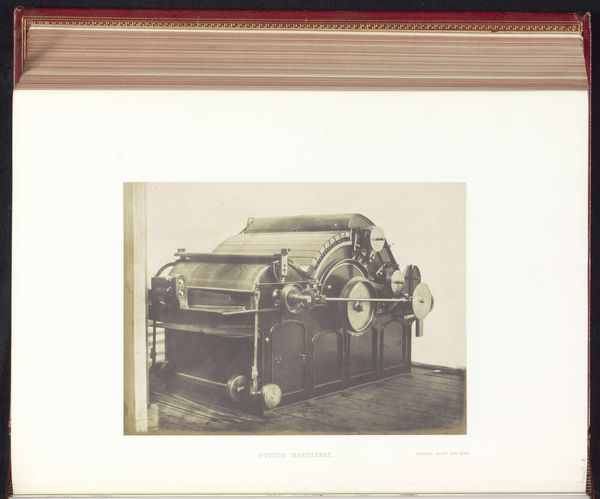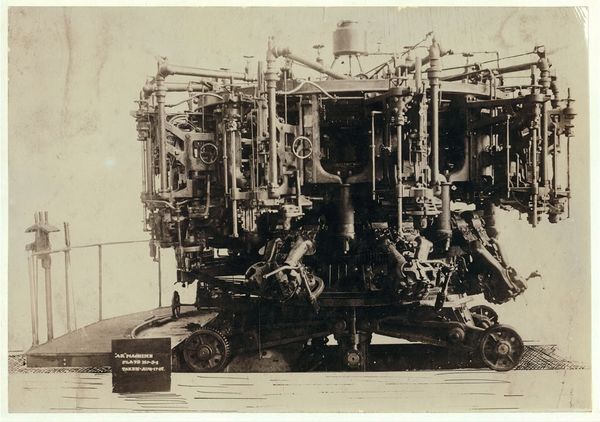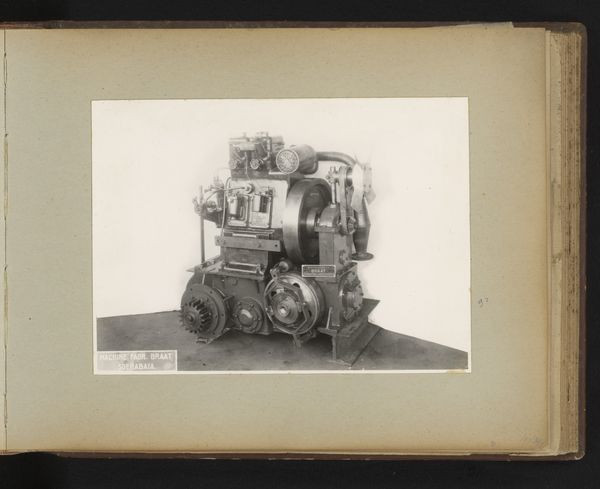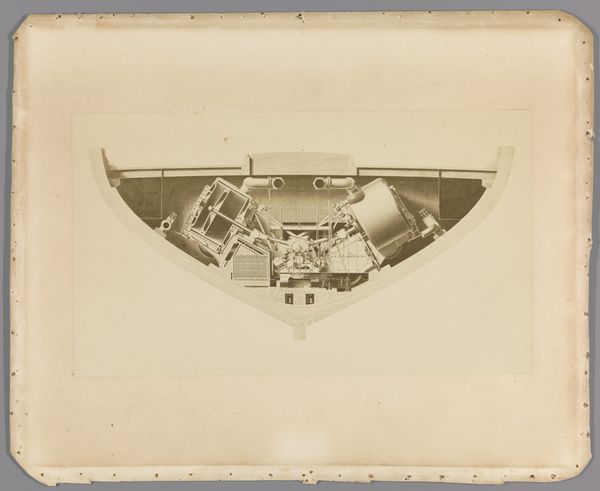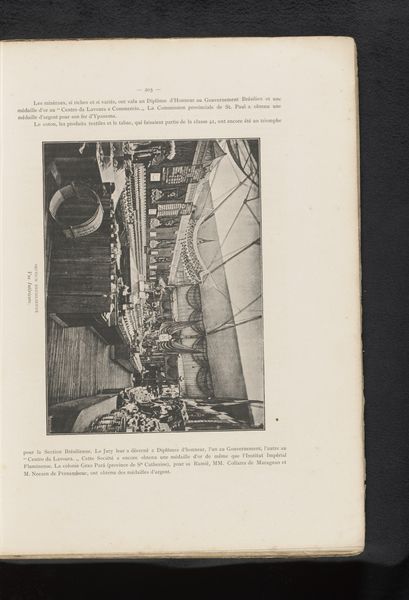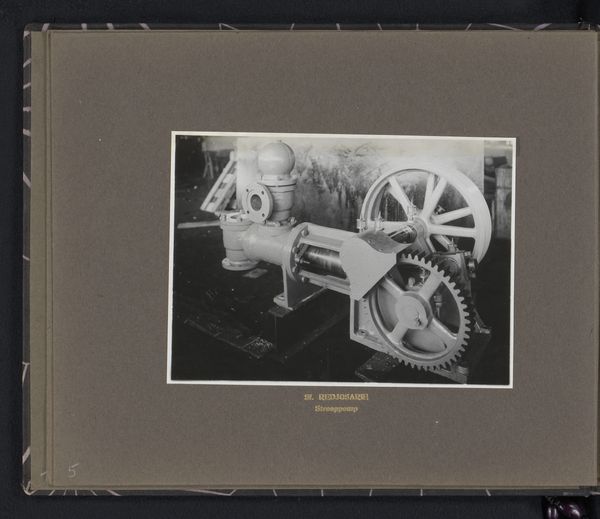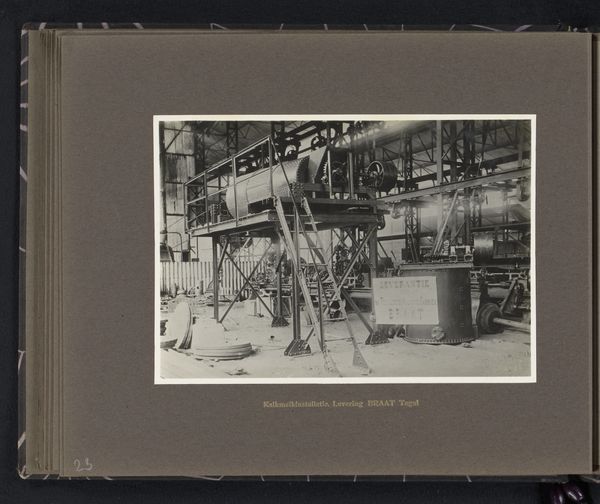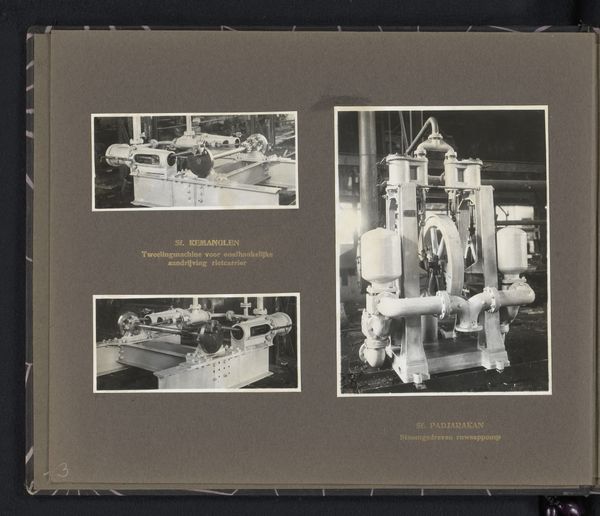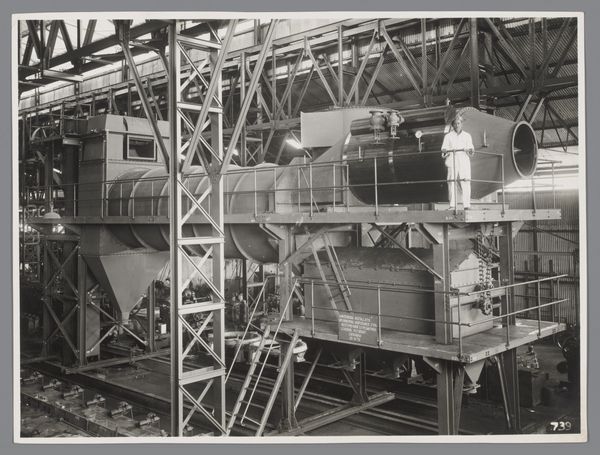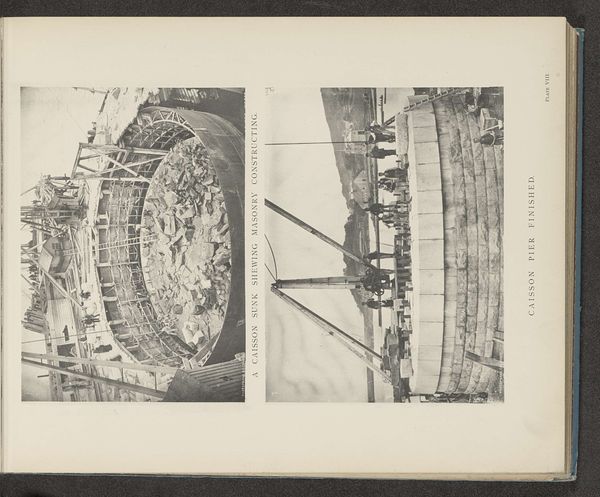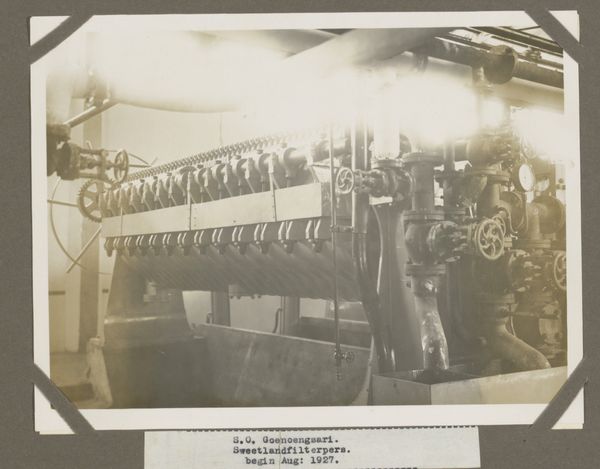
photography, gelatin-silver-print
#
photography
#
photojournalism
#
gelatin-silver-print
#
modernism
Dimensions: height 160 mm, width 220 mm, height 240 mm, width 320 mm
Copyright: Rijks Museum: Open Domain
Curator: Wow, this photograph really captures something about the machine age, doesn’t it? The artwork, dating to 1924, is simply titled "Motor in een van de gondels van de zeppelin." Editor: My first thought? Anxiety. All those interconnected parts. It looks fragile and monumental at the same time, like a high-stakes gamble with technology. I mean, all those pieces working in tandem to defy gravity. Amazing and utterly terrifying. Curator: That tension, between progress and precarity, really defines the era, doesn’t it? This gelatin silver print falls into a style often described as Modernism. These photographic techniques emphasized a clear representation of their subject in a direct and objective manner, celebrating advancements in engineering. Editor: Yet even framed as “progress,” images like these still held cultural anxiety, right? We can see the public excitement with new zeppelin travel, juxtaposed with the knowledge of its risk, just ready to burst into flame. The zeppelin looms so large in the imagination – a promise, a threat, an environmental challenge? The zeppelin casts such a long shadow. Curator: You bring up such important factors when we view these machines today, right? Because these zeppelins served a social function in many respects, including transporting elites and even sometimes dropping propaganda materials. And with this being an Anonymous photograph, the question remains for me, how does it operate within photographic truth-telling and artistic vision? Editor: Right, what is its narrative? This reminds me, though, of stepping into a giant robot heart, something cold yet utterly compelling. There's an elegance in its raw functionality. Curator: Exactly. And seeing these components divorced from their typical context allows a new layer of engagement. When presented with these details through photography, we are tasked to decipher function from form. Editor: And the beauty in its engineering. You know, thinking about it all, perhaps a new view of environmentalism needs to include how innovation changes our environment on every level, even our artistic environments. Thanks for sharing, Curator. This made me think! Curator: Of course. It makes me appreciate that even the depiction of machines can reveal so much about a time and its complicated legacy.
Comments
No comments
Be the first to comment and join the conversation on the ultimate creative platform.

